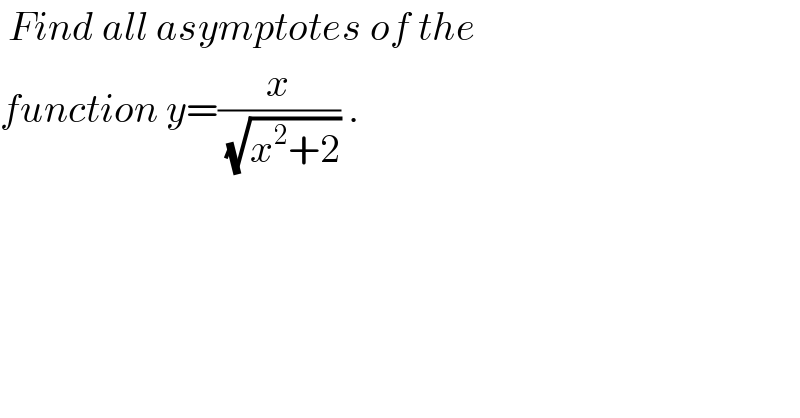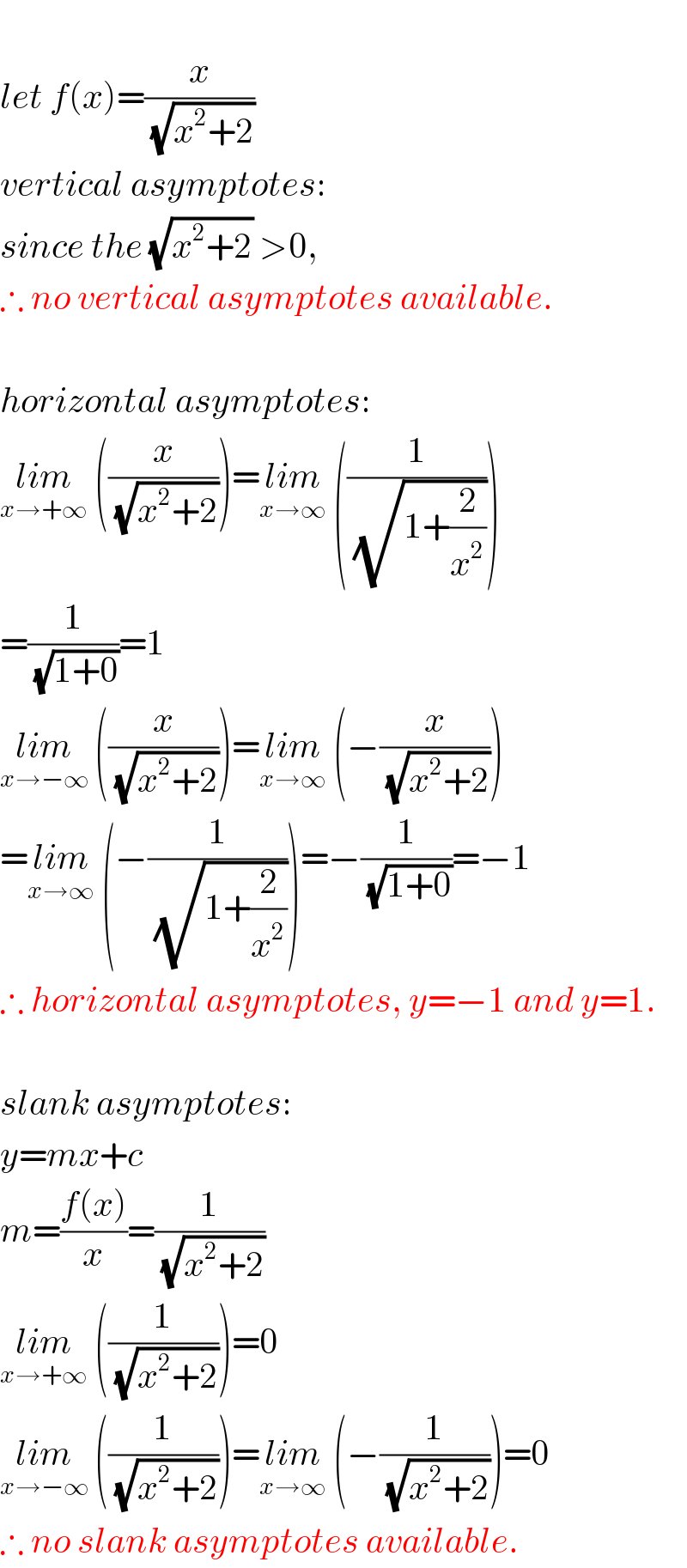
Question and Answers Forum
Question Number 126008 by bramlexs22 last updated on 16/Dec/20

Answered by liberty last updated on 16/Dec/20

Answered by ebi last updated on 16/Dec/20

| ||
Question and Answers Forum | ||
Question Number 126008 by bramlexs22 last updated on 16/Dec/20 | ||
 | ||
Answered by liberty last updated on 16/Dec/20 | ||
 | ||
| ||
Answered by ebi last updated on 16/Dec/20 | ||
 | ||
| ||